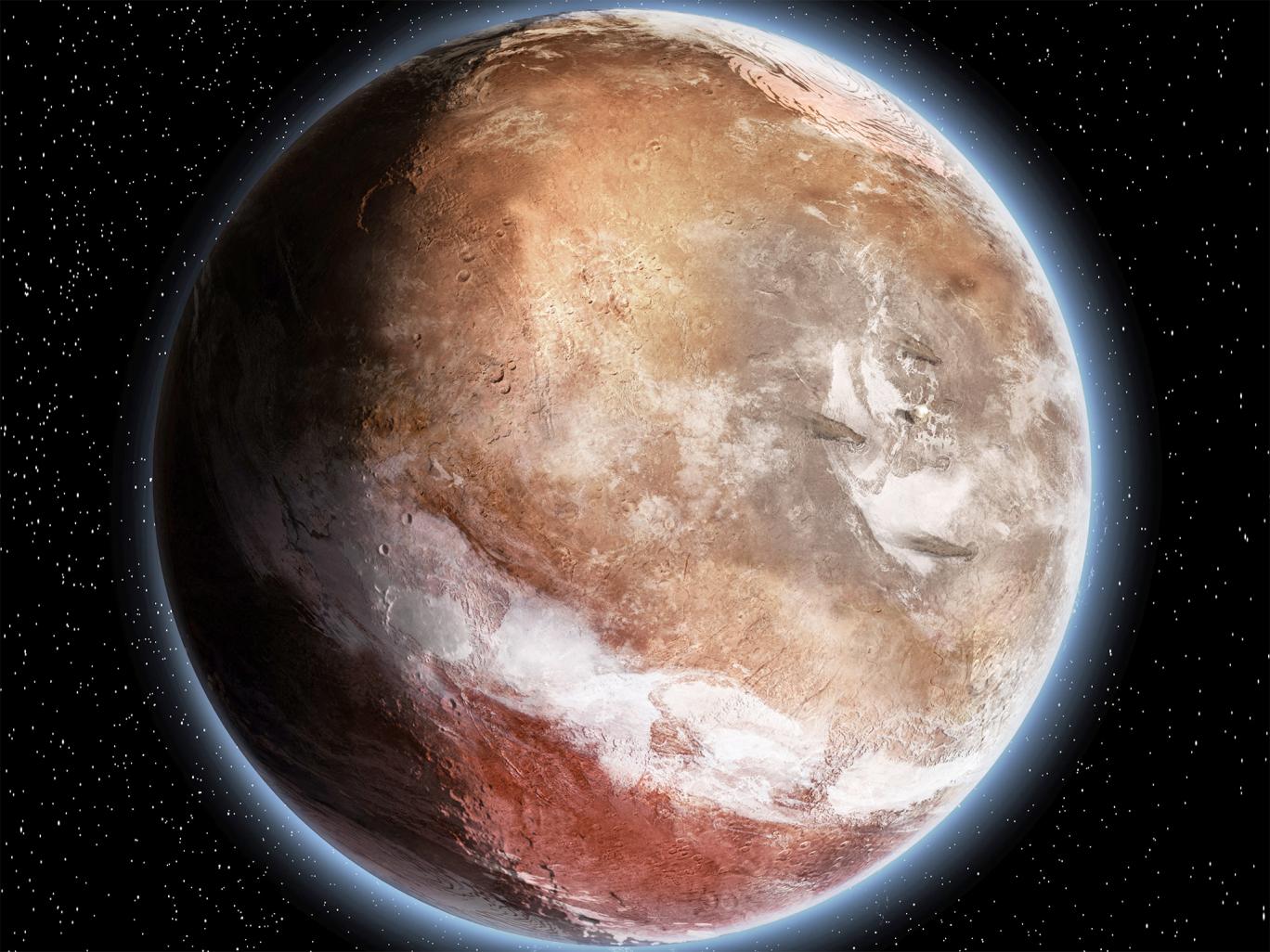
Mars mega-tsunamis might offer clues to where alien life can be found
Source: www.independent.co.uk
Huge “mega-tsunamis” on ancient Mars could show that the red planet was once covered with vast oceans that sustained human life.
The shores that could be found might make places to find signatures of the microbial life that is thought once to have existed on the planet’s surface, researchers said.Scientists have long found it difficult to pick out the shorelines that would have been created by a hypothesised sea that covered the planet billions of years ago. But a new study suggests that the shorelines were characterised by two huge meteor impacts that sent giant waves across the surface’s planet.
Those tsunamis would have reached as high as 120 metres tall and were caused by two meteor strikes that were millions of years apart, according to the new research.When they crashed into the planet, they left huge ruptures in its surface and left deposits along its northern plains.
Those same sediments can be used to see the shorelines of the huge oceans that once covered the planet.The sediments are thought to mark out the shorelines of large expanses of water that once covered the Martian lowlands.
Dr Alexis Rodriguez, from the Planetary Science Institute in Tucson, US, said: “For more than a quarter century, failure to identify shoreline features consistently distributed along a constant elevation has been regarded as inconsistent with the hypothesis that a vast ocean existed on Mars approximately 3.4 billion years ago.
“Our discovery offers a simple solution to this problem; widespread tsunami deposits distributed within a wide range of elevations likely characterise the shorelines of early Martian oceans.”
Between the two impacts, Mars went through a period of frigid climate change with liquid water turning to ice.The second tsunami formed rounded lobes of ice whose structure suggested that the ancient ocean was briny.Co-author Dr Alberto Fairen, from the Centre of Astrobiology in Madrid, Spain, said: “It is difficult to imagine Californian beaches on ancient Mars, but try to picture the Great Lakes on a particularly cold and long winter, and that could be a more accurate image of water-forming seas and oceans on ancient Mars.”The icy tsunami lobes would be “very good candidates” for places to search for biosignatures of microbial life, he said.
The research is published in the journal Scientific Reports.
